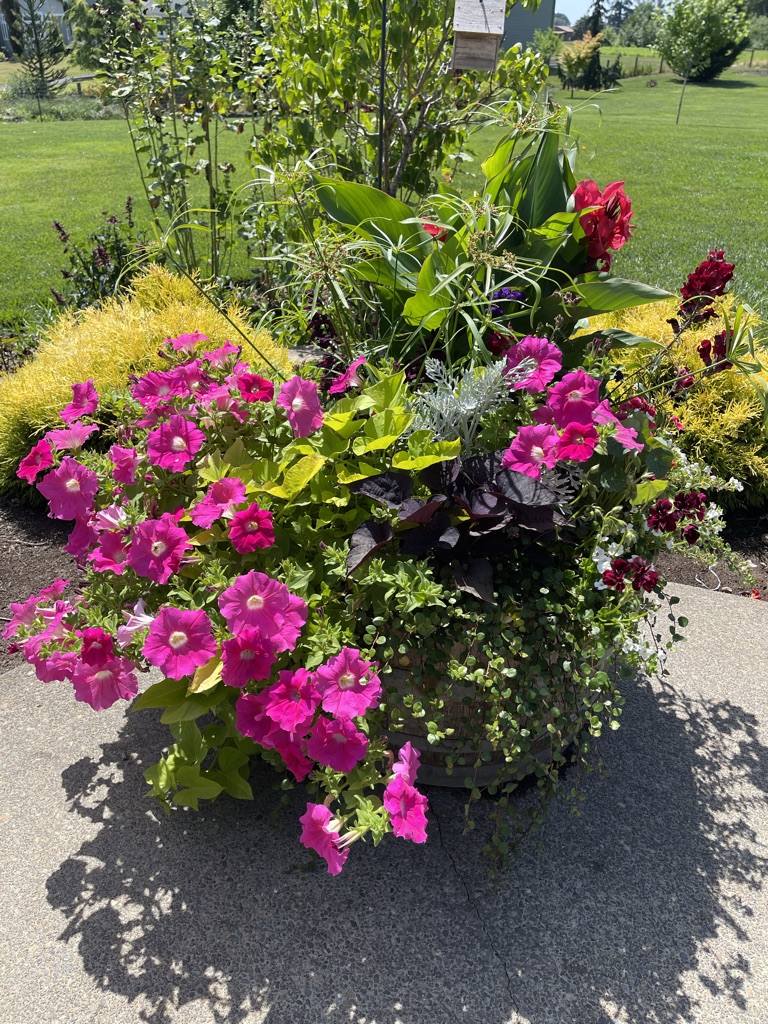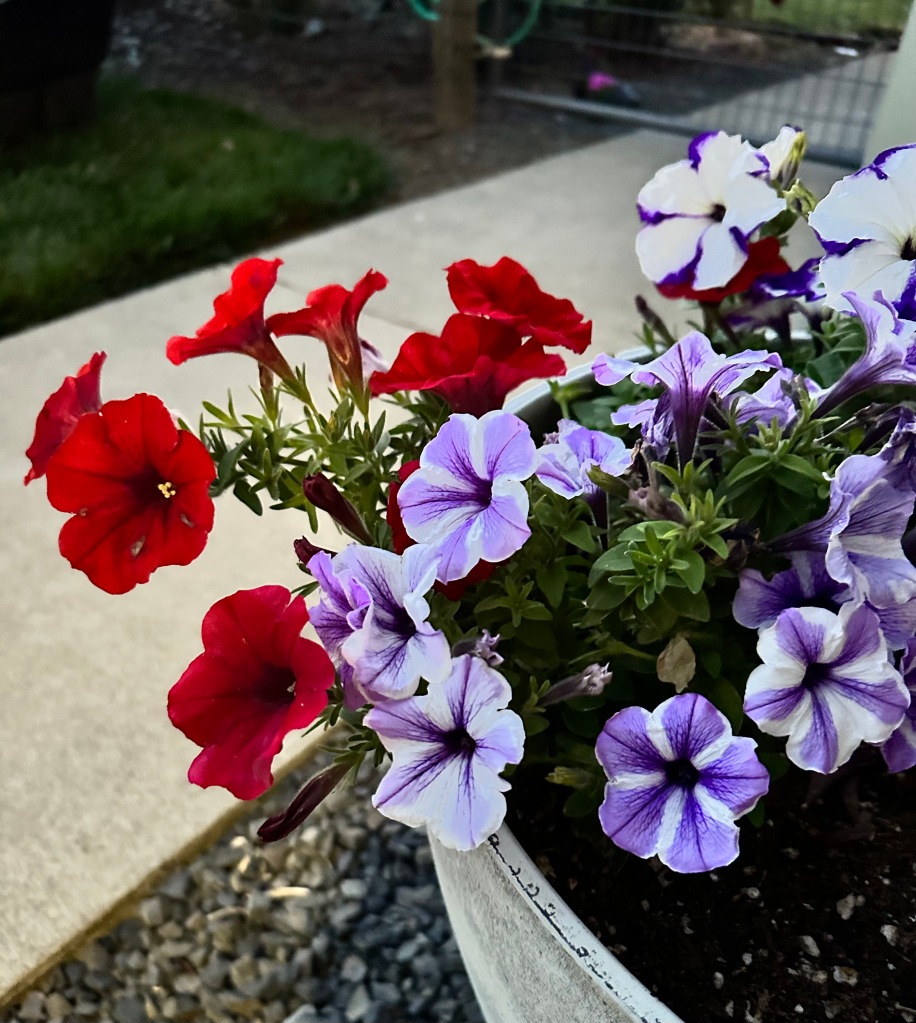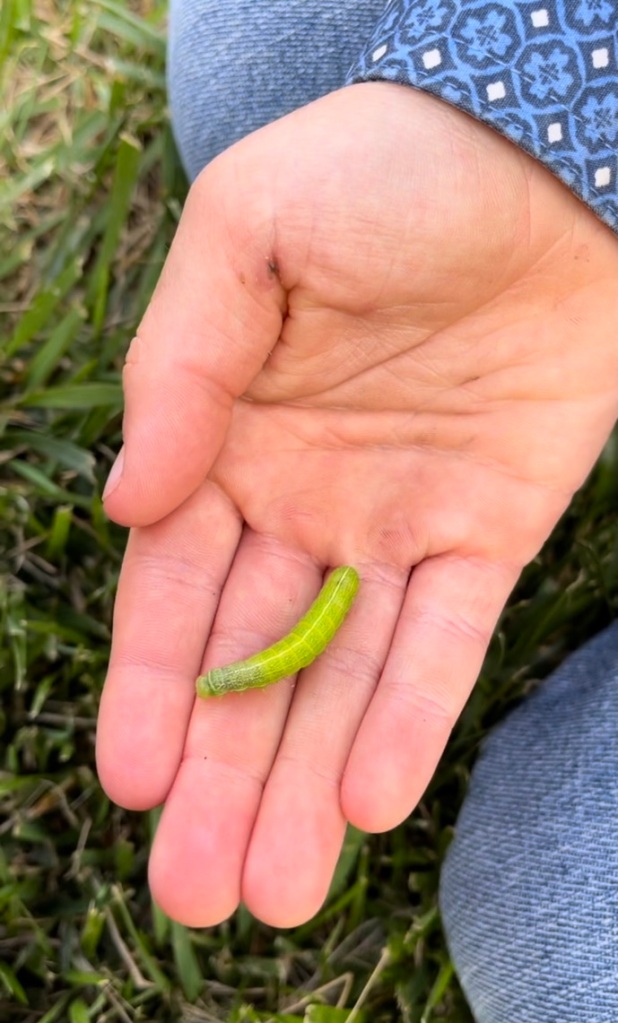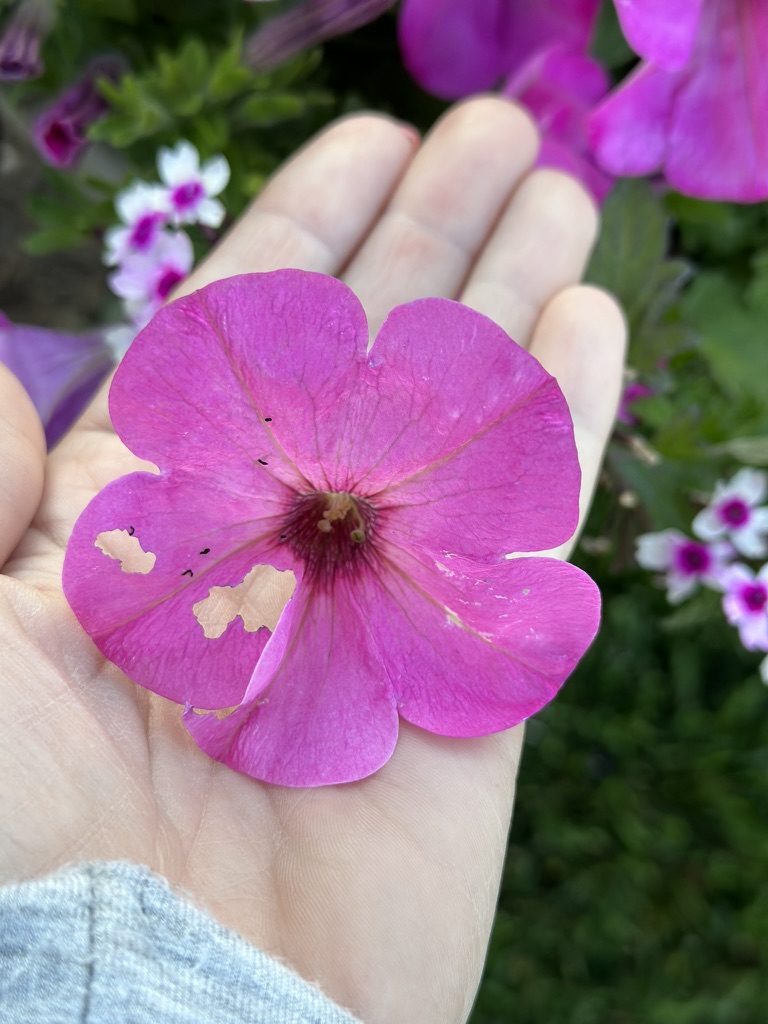I work at a local garden center and the other day I received a phone call from a customer with some questions about petunias. We spoke for about 7-8 minutes about all things petunias, ‘why are mine leggy?’ ‘why aren’t they blooming profusely?’, etc. I got home and told my husband about this conversation over dinner and sort of scoffed at it. How did this customer not know anything about petunias!? You know what my husband said to me? “What’s a petunia?” So I thought I’d share a few things I know about petunias!

Varieties
When selecting your petunias, make sure you read the tag on the variety you pick. Some of them will have more of a mounding habit which would make them a great ‘filler’ in the ‘thriller, filler, spiller’ recipe of putting together a container. Other varieties will have more of a trailing habit, making them a great ‘spiller’. A couple of brands known for profusely spilling plants are the Supertunia variety by Proven Winners and the Wave Petunias by Wave. So depending on what look you’re going for, your garden center should have many options.

Pruning
If your petunias have long stems and only a few blooms, making them look leggy, it might be time for a trim. You can go around the plant or the planter and trim off 1/3 to 1/2 of the stems. By pruning off excess stems and blooms, you will be encouraging the plant to redirect its energy to grow new and more profuse blooms.
Pests
The main petunia pest is the dreaded budworm. One summer, my mom pulled 19 off one of my plants for me. They’re a sneaky little pest, but once you know what you’re looking for they’re easier to spot. The first sign of budworms are holes in the blooms where they’ve been chomping away. If you have enough worms on the plant, they’ll decimate all the blooms within a day or two. They can be so damaging, I tried swearing off petunias all together this year. But I was able to score some for no cost, so I’m giving them another whirl. There is a spray you can use, Captain Jack’s Dead Bug Brew, once a week to help keep the budworm population low or nonexistent. Just be sure to spray it in the evenings after the pollinators go to bed as it can hurt or kill them as well. The other thing you can do is scour your plant if you see any damage and just pluck them off one by one and get rid of them. They are very good at disguising themselves as they’re usually the same color as the stem of the plant. So check along the underside of the stems when you first start looking for them. Once you spot one, the rest will be easier to find!


Feeding
Being an annual, they’re a very hungry plant. When you first put them in a container or in the ground, you’ll want to use a transplant fertilizer. That’ll help the plant transition from its original pot into a larger space. After that, you’ll want to feed it a water-soluble plant food once every 1-2 weeks. I try and do my feeding on Sundays, that way it’s easier to keep track of when I did it last. There are a variety of them on the market including ones from Proven Winners and Miracle Gro. Any local garden center will have some for you, including ones under their own brand.
Conclusion
So in conclusion, petunias are a wonderful, well-producing annual that give beautiful and long lasting results. Make sure they are receiving enough sunlight during the day and enough water through the warm summer months. They come in more colors and color combinations than I could ever list. When well taken care of, you’ll have color in your yard or containers for months from the same plant!

